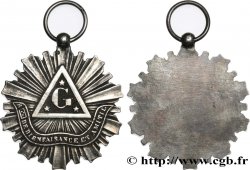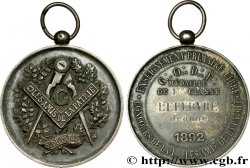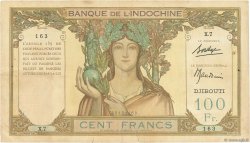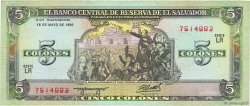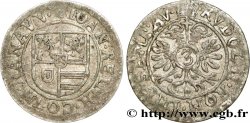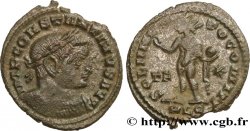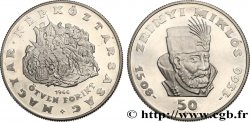E-auction 6-1341 - fjt_255847 - FRANC-MAÇONNERIE - PARIS LES CŒURS UNIS - PARIS 1820
Devi Sign-in ed essere un offerente approvato fare un'offerta, Login per fare offerte. Conti sono soggetti ad approvazione e di approvazione sono raggiunti entro 48 ore. Non aspettare fino al giorno di una vendita si chiude per registrarti.Confermando la tua offerta su questo oggetto ti impegni ad un contratto legalmente vincolante per l'acquisto di questo prodotto e fare clic su «offerta» costituisce accettazione dei termini di utilizzo de e-auctions cgb.fr.
Offerta deve essere collocato in euro gli importi interi vendita only.The si chiuderà al momento sulla descrizione dell'oggetto, eventuali offerte pervenute al sito dopo l'orario di chiusura non verranno eseguite. Volte transmition possono variare e le offerte potrebbero essere respinto se si attende per gli ultimi secondi. Per ulteriori informazioni ckeck le FAQ.
SENZA COSTI PER GLI ACQUIRENTI.
SENZA COSTI PER GLI ACQUIRENTI.
| Valutazione : | 24 € |
| Prezzo : | 14 € |
| Offerta maxima : | 21 € |
| Data di fine vendita : | 06 maggio 2013 18:54:00 |
| partecipanti : | 7 partecipanti |
Tipo : LES CŒURS UNIS - PARIS
Data: 1820
Metallo : rame rosso
Diametro : 24 mm
Asse di coniazione : 12 h.
Orlo : lisse
Marchio : (main) CUIVRE
Grado di rarità : R1
Commenti sullo stato di conservazione:
On reste perplexe devant un tel état de conservation !
N° nelle opere di riferimento :
Diritto
Titolatura diritto : CARRÉ LONG DES CŒURS UNIS O.:. DE PARIS.
Descrittivo diritto : G dans une étoile rayonnante entourée de l’équerre entrecroisée aux pointes avec le compas, le tout dans une couronne ouverte d’acacia.
Rovescio
Titolatura rovescio : UNIS PAR L’HONNEUR ET PAR L’AMITIÉ ; À L’EXERGUE 5820.
Descrittivo rovescio : Autel flammé de deux cœurs unis, orné d’une guirlande et d’une étoile rayonnante portant un G.
Commento
La franc-maçonnerie s’implante en France aux alentours du premier quart du XVIIIe s. sous l’influence d’aristocrates anglais. Initiatique, elle est fondée sur le rite hiramique, du nom d’Hiram de Tyr, personnage biblique, architecte du roi Salomon sur le chantier du Temple et qui a résisté à la torture sans livrer ses secrets. Hiram a aussi donné un point de départ du calendrier maçonnique commençant 4000 ans avant le calendrier chrétien. Les symboles servent de signes de reconnaissance entre les initiés, notamment des outils de constructeur de cathédrales (équerre, compas, niveau, maillet, etc.), des formes (triangle, étoile), des nombres (trois, cinq, sept) et des lettres.
Freemasonry was established in France around the first quarter of the 18th century under the influence of English aristocrats. An initiatory practice, it is based on the Hiramic rite, named after Hiram of Tyre, a biblical figure, architect of King Solomon on the construction site of the Temple, who withstood torture without revealing his secrets. Hiram also provided a starting point for the Masonic calendar, which began 4,000 years before the Christian calendar. Symbols serve as signs of recognition between initiates, including cathedral builder's tools (set square, compass, level, mallet, etc.), shapes (triangle, star), numbers (three, five, seven), and letters.
Freemasonry was established in France around the first quarter of the 18th century under the influence of English aristocrats. An initiatory practice, it is based on the Hiramic rite, named after Hiram of Tyre, a biblical figure, architect of King Solomon on the construction site of the Temple, who withstood torture without revealing his secrets. Hiram also provided a starting point for the Masonic calendar, which began 4,000 years before the Christian calendar. Symbols serve as signs of recognition between initiates, including cathedral builder's tools (set square, compass, level, mallet, etc.), shapes (triangle, star), numbers (three, five, seven), and letters.








 Segnalare un errore
Segnalare un errore Stampate la pagina
Stampate la pagina Condividi mia selezione
Condividi mia selezione Fai una domanda
Fai una domanda Consegnare / vendere
Consegnare / vendere
 Descrittivo
Descrittivo
